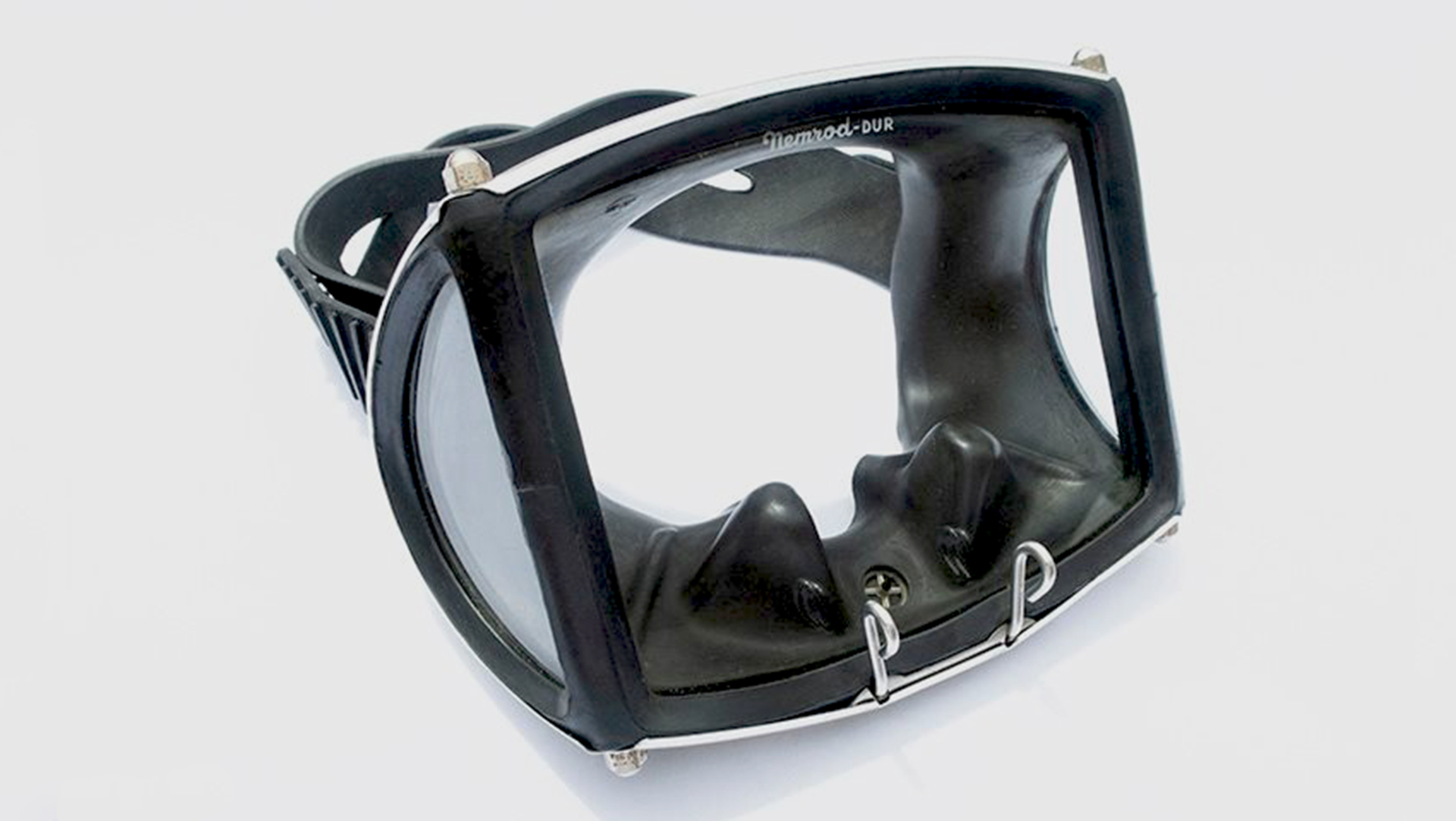Let's review how the Nemrod Haiti snorkel-mask fared before it ceased production in the mid-1960s:
1955
Spanish: "PS-2069. Lentes
Asteria modelo Haití. Sistema de aspiración y respiración simultánea por nariz y boca. Boya con doble válvula que impide penetre agua en su interior".
Rough translation: "PS-2069.
Asteria diving mask: Haiti model. System comes with drainage facility and the wherewithal to breathe simultaneously through the nose and the mouth. Double valve devices prevent water ingress".
The product description focuses on the valves fitted to the mask, which serve to drain off any water getting inside and to make it possible for the wearer to breathe orally and nasally at the same time.
1956
Spanish: "Lentes
HAITI 493 Pts. Boya doble válvula. Aspiración y respiración simultánea nariz y boca".
Rough translation: "HAITI diving mask, 493 pesetas: Double valve device. Drainage facility and the wherewithal to breathe simultaneously through nose and mouth".
1957
Spanish: "
LENTES HAITI. Modelo modernisimo con respirador acoplado. Ptas. 493'-".
Rough translation: "
HAITI DIVING MASK. State-of-the-art model with breathing tube attached. 493 pesetas".
1961
Spanish: "
PS/2069. — HAITI. — Con aro metálico de seguridad, respirador acoplado y sistema de doble boya, de respiración simultánea por nariz y boca".
Rough translation: "
PS/2069. — HAITI. — Fitted with metal security band, attached snorkel and double valve system, for simultaneous breathing through the nose and mouth".
1964
Spanish: "
PS/2069. — HAITI. — Con aro metálico de seguridad, respirador acoplado y sistema de doble boya, de respiración simultánea por nariz y boca".
Rough translation: "
PS/2069. — HAITI. — Fitted with metal security band, attached snorkel and double valve system, for simultaneous breathing through the nose and mouth".
So the Nemrod Haiti never changed from the early 1950s to the mid-1960s. We'll look next at the Nemrod Java snorkel-mask, which was a simplified version of the Haiti.



